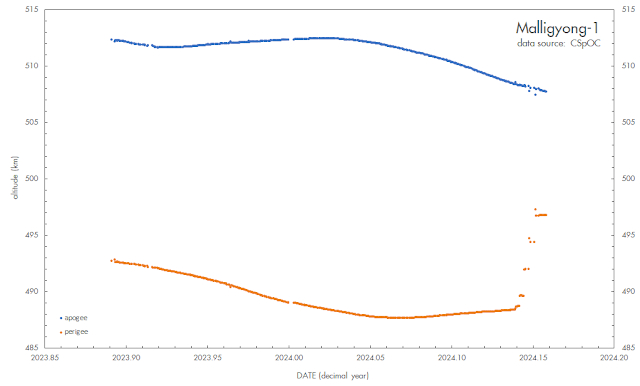“The Satellite Is Alive”: North Korea’s Malligyong-1 Functional in Orbit
5th Mar 2024
Purportedly, North Korea’s Malligyong-1 satellite is still operating in orbit despite Western claims that the satellite’s functionality is unknown. What the satellite’s objectives and capabilities are remains unclear. However, satellite expert from Holland’s Delft University of Technology, Marco Langbroek, said “the satellite is alive”. Therefore, North Korea has managed to stablise their satellite after it was successfully launched in November, 2023.
In a blog post, Langbroek commented: “Like two civilian predecessors (KMS 3-2 in 2012 and KMS-4 in 2016), it did indeed reach orbit. But: although North Korea in the days and weeks after launch claimed the satellite took images of various US and South Korean Naval bases and other important locations (such as the White House), it was not clear whether the satellite was really functional. But now we can definitely say the satellite is alive.”
North Korea’s Malligyong-1 Satellite
North Korea’s recent spate of satellite launches has not gone well. Two of its satellites met their end in an inferno when the rocket delivering them malfunctioned. Nonetheless, the third time was the charm, and Malligyong-1 reached orbit.
However, the Western world was unclear whether the satellite survived orbital insertion and if it was still functioning post-launch. Now, those claims have been refuted, as the North Korean satellite appears to be alive and well. Additionally, according to Langbroek, there are unexpected technologies onboard.
Proving Malligyong-1 Is Functional
In a timeline of events, Malligyong-1 was launched aboard the Chollima-1 rocket in November last year. Once in orbit, North Korea purportedly captured images of key strategic US and South Korean locations, including naval bases and the White House.
Regardless, the US could not verify if the satellite was working, and if the claims were true. To aid the mystery, North Korea never released any imagery from the satellite, nor was it’s signals detected by “independent radio trackers,” Langbroek said. In spite of that, the first set of perigee-raising manoeuvers were eventually and finally sighted.
On 19th February, Malligyong-1 “can be seen as the stepped “jump” in the red line in the diagram below, which maps the evolution of the apogee and perigee height of the orbit since launch. The manoeuvre proves that Malligyong-1 is not dead, and that North-Korea has control over the satellite,” Langbroek remarked.

Surprises Onboard
Observations of the satellite’s manoeuvres identified that Malligyong-1 unexpectedly has its own population system. This is due to other North Korean satellites not possessing similar technologies or making homogeneous manoeuvres. Therefore, the presence of a propulsion system “was not something I and many other analysts expected,” Langbroek said.
He added: “having the capacity to raise the satellite’s orbit is a big deal. It means that North Korea, as long as there is fuel left in the satellite, can prolong the satellite’s orbital lifetime, by raising its orbit when it gets too low due to natural orbital decay: thus delaying reentry into the atmosphere.”
The West’s Reaction
While the movements were detected and plain to see, they were still disputed. South Korean Defense Minister, Shin Won-sik, was quick to dismiss the satellite’s functionality: “[its] currently in orbit. But it is not showing any signs of performing tasks or engaging in reconnaissance activities”, he said. It appears the West may have been burying their heads in the sand.
To rebut, Langbroek said: “That remark didn’t age well: while we indeed currently can not be sure whether the satellite does successfully take imagery, it at least performs orbital manoeuvres, so in that sense it is functional. And to do such manoeuvers, you need to have the satellite under control, including attitude control. The orbit rise comes at a moment that some Western observers expect that North Korea will launch another satellite soon.”







Thank you for your comment! It will be visible on the site after moderation.